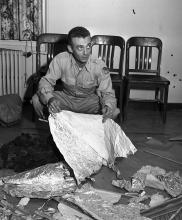Listen to today's episode of StarDate on the web the same day it airs in high-quality streaming audio without any extra ads or announcements. Choose a $8 one-month pass, or listen every day for a year for just $30.
You are here
Shorter Cycles
During the Little Ice Age, much of the northern hemisphere was plunged into a deep freeze. Winters were so cold that the Thames River in England froze over, and the Vikings had to abandon their settlements in Greenland. Summers were chilly, rainy, and gloomy – perhaps helping inspire Mary Shelley to write “Frankenstein.”
That era incorporates a time when the Sun was especially quiet. Known as the Maunder Minimum, it lasted from about 1645 to 1715. Astronomers recorded few sunspots then — they sometimes went months or years without seeing a single one. With less activity, the Sun emits less energy. That suggests the Sun could be at least partially responsible for the Little Ice Age.
A recent study found that not only was the Sun especially quiet during that era, but its cycle of magnetic activity was especially short.
At the peak of a solar cycle, the Sun is covered with many sunspots, and it produces big explosions of gas and energy. The cycle lasts an average of about 11 years, although it can vary by a couple of years either way. The study found that the cycles during the Maunder Minimum lasted only about eight years.
Researchers looked at records of auroras kept by Korean astronomers. Auroras are created by particles from the Sun, so their intensity and location can reveal the Sun’s activity level. The study found a clear eight-year cycle in the records – a short cycle during an era that was short on warmth.
Script by Damond Benningfield





